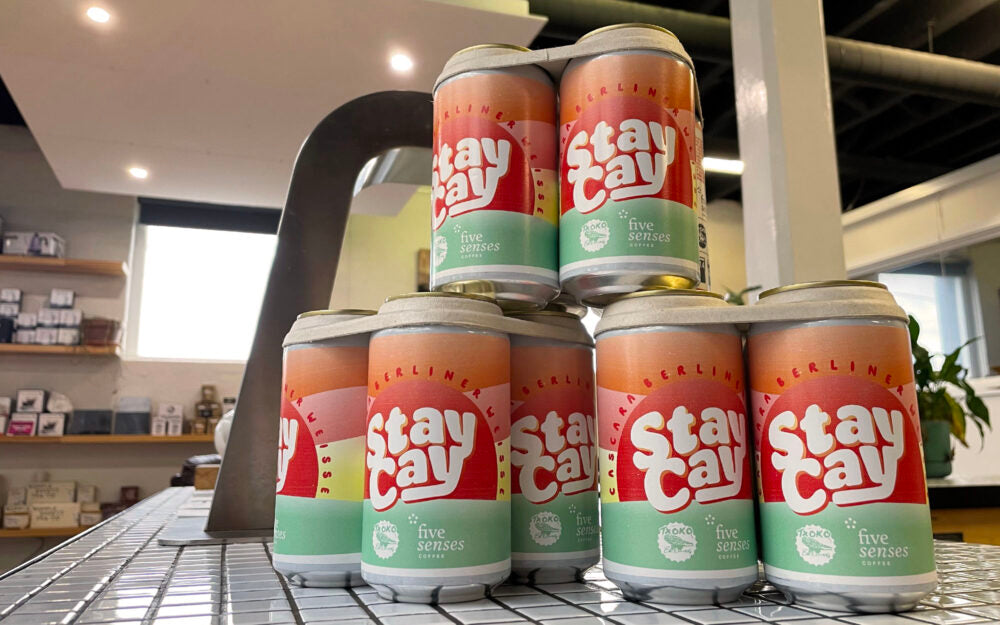Unless you grow coffee trees or have the opportunity to visit a coffee farm or mill, there is probably a slim chance that you’ve ever tasted the fruit of the coffee seed. Or, is there?

The coffee cherry before it’s dried to create cascara.
Cascara is the dried fruit from the coffee cherry. It’s considered coffee waste and is normally the afterthought of coffee growing. Some coffee pulp is used as fertilizer (once it’s been fermented, as otherwise it is too acidic) however most is diverted to landfill where it rots and decomposes.
Processing it for our consumption is time consuming, labour intensive and requires distraction from the main harvest; coffee.
Not this time, though. In a massive plot twist; In Naranjo, Costa Rica, fincas Santa Lucía and Anonos grew coffee with the intention of harvesting the fruit. In this instance, coffee beans were the byproduct of cascara production!
The cascara, much like our coffee beans, requires several stages of processing before it reaches its final drinkable delicious product. After harvest, on the same day, the whole cherries travel to a specialised facility. Here the seeds, still in their mucilage, are removed and the pulp/coffee fruit is washed, pasteurised and dehydrated in a sterile environment. This ensures the cascara is free of pathogens, debris and everything else not desirable in our cups!
Once it reaches the required moisture content, the cascara is then packed for shipping and ready to steep. Brewed with hot or cold water it makes a refreshing tea-like beverage, this specific lot of cascara has a red apple sweetness, golden raisin and apricot nectar with a slight spice. As we are leading into end of year parties, summer and all things celebratory we thought we better charge it up!

The Txoko Brewing Co team.
We got chatting with our mates at Txoko Brewing Co in Baskerville, WA. Their head brewer, Gabriel Rodriguez, is an absolute beer buff. His sours are phenomenal and his creations showed a lot of potential of pairing together with our cascara like peas and their respective pods.
To brew this magical elixir, Gabe started off with extra clear pilsner grain, about 250kg of malted barley. This grain gives a very light colour to the beer and a light malt profile. Darker malts taste a lot more roasted, but Gabe wanted a “clean slate for the cascara to show through”. Hot water was added to achieve a temp of 64 degrees, allowing for fermentable sugar to be extracted out of the grain. The temp then rose in small increments in a process called ‘step mashing’. Step Mashing allows for a bit of complex unfermentable sugars to be released: The aim of this is to add body to the beer.
‘Lautering’ then occurs, where the liquids are separated from the spent grains by passing through a mesh. It is then boiled, and at this step is where the hops are added to bitter the beer and balance the sweetness from the grains. The boil also works to remove the unwanted flavours from the grain. After this, the liquid is then chilled to about 20 degrees when the yeast can safely be added. Gabe’s particular chosen yeast for this project was a varietal called Kolsch.

The finished product.
Kolsch is clean fermenting and characterised as giving a crisp character to beers. After about 2 weeks of fermenting at 20 degrees Celsius the cascara fruit was added in large bags (reminiscent of tea bags!) These were allowed to infuse for 4 days, something we had discovered from preliminary testing was the ‘sweet spot’. After this the beer was chilled down to 1 degree, where the sediment crashes out to the bottom of the tank. From here, the liquid is transferred from the fermenter tank into a lagering tank. This further cold condition allows Txoko Brewing Co to drop out more sediment over time using no chemicals, just time and patience.
It is during the lagering that the beer is also injected with CO2 to carbonate it. This is very much in a similar way to a giant soda stream, but different in that it is very slowly and gently added so as not to agitate the beer and push out the volatile aromatics and flavours.

Labelling.
The final process is canning and packaging, then comes my favourite part! The taste testing, and you can rest assured the Cascara Berliner Wiesse passes every-single-one of our extensive taste testing (just quality control, I assure you!). The amount produced is super limited, there are only a handful available for purchase from Txoko. If you are lucky enough to get your hot little hands on them then kudos to you! Jump on their website ASAP to nab some if you can.
The incredible time and effort required to create this naturally processed beer adds so much to the final result. At every step ultimate care has been taken, from the growing of the cherry to the filtering of the sediment. With such a delicious result, we can’t think of anything better to celebrate with during every Stay Cay!



